Week 3
Posted by Louise Woodland in Uncategorized on May 22, 2014
Made it so far! Last week was a struggle as I was quite busy at work but I was determined to participate more this week. I have already posted my ‘Learners Perspectives’ for the ‘Week 3 – if you only do one thing …’ so have a look at that too.
This week’s aims
By the end of this week, we aim for you to be able to:
- identify appropriate digital resources for particular learning contexts by reviewing implications for accessibility, learner requirements and implementation;
- appreciate discovery and reuse issues with open educational resources (OERs)
- explore a range of options for creating new digital resources;
- assess the affordances of different learning platforms and their impact on learning;
- apply your understanding about pedagogical affordances to current trends.
All very crucial topics for us at the moment – so looking foward tokeeping up with discussions.
Week 3- If you only do … Learner Perspective
Posted by Louise Woodland in TEL on May 22, 2014
Taking 3 types of content into account discuss the following:
What elements of these do you think are appealing to different learners?
- What learners, if any, would they be inappropriate for and why?
- How do each of these resources differ from that of the resources we’re using in ocTEL? Do they promote social learning, re-use of their materials, or open access?
- What ways can you see to improve the effectiveness or potential reach of these resources? Effectiveness can be considered as allowing students to work at their own pace and review areas they need to, providing a richer learning experience by expanding the range of expertise which students will confront, or providing a range of materials in different media formats to suit students’ different learning preferences.
http://elearningexamples.com/multimedia-learning/e-learning-games/
https://www.youtube.com/user/khanacademy
http://www.elu.sgul.ac.uk/iethics/
These 3 offerings are very different in style and content. First I’ll look at the e-learning games.
1. What learners – if any- would they be appropriate for?
The elearning examples are great fun – games effectively. I chose a travel game where I had to travel to a certain place with limited food, medicine and numerous dangers along the way. It is based on a dice throwing concept which introduces an element of risk and uncertainty as to what problems you are sent and you make decisions based on those. I enjoyed it but had to play it a couple of times to begin to really make strategic decisions properly. It does make you want to succeed and try again – it looks easy but is deceptively hard. This would be appropriate for people who have to plan and make decisions that have an effect on others perhaps.
The Khan Academy video I watched was teaching Maths (7+6). Appropriate for children or adult learners needing extra help. They are clear and show various ways of displaying the working of the problem and arriving at the answer.
iEthics. This was an interesting role play simulation. It enabled you to watch different scenarios and see what happens as a result of each situation and conversation. I didn’t follow it in great detail so I don’t know if you directed the outcome by selecting different options – or whether it was just a single pre-written scenario. Anyway – very different to OcTel as it is a training package for a specific environment and set of students. I have seen something similar written in Articulate Storyline.
2. How does it differ from ocTel?
The games differ from the ocTEL course in that it is very visual and the only interaction you have is to roll the dice. There is no mechanism to interact in any other way with others via a social platform. There is an award system in that you gain items to help you progress and there is a specific aim. OcTel is about participation and learning from and with others not ‘winning’ or being ‘goal’ driven.
The Khan Academy video is about teaching a specific solution to a problem: the sum and the solution is known and proven, whereas the OcTel course is about people from various backgrounds and experiences discussing subjects and theories which may not have a clear or definite answer. It is training package with a definite path to a soultion made by a tutor. Again no interaction is required or possible.
3. How could effectiveness be improved?
Well the game it is very good but once you have achieved the goal it would not be worth doing again. As a game – does it need to be more effective than it is? What is the intended learning out come? To get from A to B – which you probably can do eventually if you play it well (and if the dice role favourably!) Would I change it – not sure – let me play it a bit more and I’ll tell you.
The Khan Academy video allows the viewer to pause, reflect and continue or review if necessary. In that respect it is extremely effective at achieving that purpose and the viewer can repeat this until they have grasped the concept and then move on in their own time. Could it be improved – it would be nice to try some examples for yourself to see if you have learned correctly.
The scenario videos – well I would make the outcomes change depending on what options I chose. I would want feedback on those to let me know if I have made a bad or good choice and the impact of that choice on the patient/patient’s family.
Surface or Deep learning?
Posted by Louise Woodland in TEL on May 19, 2014
There are some really useful thoughts here in a discussion forum on Deep Learning. It evolves into a discussion about assessment but all very relevant.
http://octel.alt.ac.uk/2014/forums/topic/deep-learning-is-not-the-ideal/
This post from Diana L is very interesting –
C.Collis’s post reflects the problem of the way the deep/surface/strategic categories are seen. This has always been problematic because deep/surface was an evidence-derived category from a combination of student interviews and performance, and defined two mutually exclusive approaches to a text. Of those two, academic learning aims for deep, for the obvious reason that it leads the student to the intended understanding of a text (in the broad sense), whereas a surface approach leads to a misunderstanding or misconception. There is no question that any teacher in any context would aim to help students use a deep approach.
The strategic approach was introduced by Noel Entwistle to make the perfectly reasonable point that in some circumstances, students are more concerned with extrinsic issues, and worry more about, for example, passing the exam than understanding the concept. This was an issue that my chapter on approaches to problem-solving (in the Marton et al book) focused on, because I’d found that students studied not just in relation to the task, but its context as well:
“Thus the deep/surface dichotomy does not characterise a stable characteristic of the student, but rather describes a relation between the student’s perception of a task and his approach to it. The student’s perception of a learning task encompasses a multitude of things: it depends on its form and content, on its relation to other tasks, on the student’s previous experience, on the student’s perception of the teacher who marked it and of how it will be assessed. But the operational outcome of this combination of judgements and perceptions is an intention either to understand or to memorise, and thereby to use either a deep or surface approach.” (p136).
So it showed that we could not necessarily identify a deep approach as a characteristic of the student, but of the student-in-context. Introducing the strategic approach muddies the original clarity of the deep/surface dichotomy because a student can be strategic and either deep or surface in relation to a particular learning task.
While I agree that C.Collis’s post is certainly thought-provoking, and agree with everything else you argue, I think this bit overstates the case:
“Thus, I don’t think “we” should focus on “encouraging deep learning in online contexts.” I’d prefer to encourage a combination of strategic and deep learning because both are equally valid types and outcomes of education.”
It’s important for students to be strategic, and it was certainly not considered a bad thing by Entwistle, which is why he argued for that category. But it’s our responsibility as teachers to encourage deep learning. That’s how understanding and the ability learn and think for yourself develops. We must help students develop that capacity if they are not doing it.
The oddest thing, for me though, is the task we are given here – why online contexts should be any different from conventional learning in this respect is a mystery. Why would it be?
Keith Smith voices my thoughts very well ….
“I’m personally not sure they would be different at a fundamental level, but I do wonder whether we know enough about how different approaches to learning might represent themselves in online learning contexts, i.e. what a surface or deep approach might look like online, and what the implications might be for designing online activities and supporting online learning. I wonder if there might be important differences in how learners interact with online multimedia for example – does a ‘surface’ learner simply ‘play’ a video clip and passively watch it, while a ‘deep’ learner studies the content of the clip, and repeatedly plays it until they feel they’ve got the point? And if that’s the case, what can we draw from this in helping learners in general ‘learn how to learn’ online?
In relation to one of the questions for this discussion, I also wonder if students who might lean towards a surface approach would have a more or a less effective experience online. It seems to me that a campus-based, lecture-based course with regular timetabled classes might potentially provide a more effective learning experience for ‘surface’ learners than an online course with more asynchronous activity, and more flexibility in when they might do things (the danger here perhaps being that they come into discussion activities at the very last minute, with no time to read and reflect on what others are saying or what they themselves want to say).”
Tuesday 13th Webinar
Posted by Louise Woodland in Uncategorized on May 13, 2014
Today’s webinar is about the opportunities and challenges of learning design for student-directed learning. We will have a presentation from Dr Panos Vlachopoulos (Macquarie University, Australia) who will focus on how a more student-directed learning design can support and empower the creation of togetherness and belonging in a community of distance learners in formal higher education.
What do we know about student learning?
It can be Teacher focused, student focused, teacher or student centred/directed/self-directed. Here are 4 useful resources which each state different ideas about this …
1. ‘Freedom to Learn’ bu Carl Rogers – How people connect together – teacher as fellow learner must participate and think like them
2. ‘On Becoming an Innovative University Teacher’ by John Cannon – Student directed learning from reflected practice approach, where learning is open for discussion
3. ‘The Power of Critical Theory for Adult Learning & Teaching’ by Stephen Brookfield. The University’s aim is to create student directed learners. Exercise control over their lives. Choose how they are assessed etc …
4. ‘Teaching as as a Science’ by Diana Laurillard – University/inistituion – think and plan for student directed learning
So what it (student direct learning) means influences approach you take. Can we allow students to do this? How much will we let them take control of learning? Are we brave enough?
Education – is political andtherefore has expectations for society. Do we feel there is enough freedom/choice to allow us to start thinking about student directed learning?
Some of the comments on the chat screen are:
“Plenty of scope for informal learning”
“QA will take precedence …as long as there are specific learning objectives/outcomes and that these are achieved I think we should be able to use whatever methods each individual should be deem appropriate and they are happy using”
“useful to remember that learning design needs to compliment the environment – remember reading some papers on learning design in ‘command and control’ professions such as police/fireservice etc
” I agree with the last comment you made and self directed learning must fit into a well designed structure
” think there is too much financial consequence for enrolment and funds distribution for there to be too much student led learning.
Panos then said that we must allow negotiation of learning outcomes if students are to take control of learning. If it is to be truly student directed there should be a period of learning during the activity.
It was interesting in this analysis of the task that he presemted that the hightest value accredited was for the Async discovery task and the Async guided tasks.But both of these scored low for community building. This is becuse Community building is seen as a synchronous activity – but think when to do this – if doen early on it might stifle creativity by the learners or to do this later in teh activity.
Therefore students who are empowered from outset with carefully designed activity which allows them more freedom to learn will find their way of interacting without needing strict monitoring of tutor. This is important for future online education being flexible and open. This means that the Teacher is a facilitator and not the director. Is about shifting responsibilities and developing abilities on both sides. It comes down to the fact that student directed learnign is risky and unsettling so there is resistance in the institution. Learning becomes more personally significant.
In summary at the start of the course you need to build relationships nad give some sort of direction or agreement towards the way forward. As it progresses you can give learners more agency and you would move towards asynchronous discovery. It is a sort of student evolutionary process as they go through the discovery process towards their end goal.
Extras for interest … He uses the VLE – good space for dominant space (dynamic space) but is asyncronous and then allow students to use own blog areas. Use it to create ‘rooms’ that they need or but also give them options to open up to extra tools (Google Docs) etc…
SNAPP – create visual interactions by students – SNAPP is great starting point http://www.snappvis.org/
Shared links –
https://www.youtube.com/watch?v=BEsZOnyQzxQ&feature=youtu.be
http://www.tandfonline.com/doi/pdf/10.1080/01587911003724611
Digital Literacy – my score!
Posted by Louise Woodland in Uncategorized on May 8, 2014
I just did the digital literacy survey by Helen Beetham:
These results show the areas of digital scholarship that you already find valuable (towards the outer edges) and those you have yet to explore in depth. Think about how you can develop the aptitudes you already have using the feedback here.
We include scepticism as a positive quality – good judgement requires a discerning and critical approach to new technologies, as well as confidence in adopting them. Then go back to the questions and look at what other researchers are doing that you have not yet tried.
Although I agree with some of them – they are not all a true reflection of how I see my own level of literacy and experience. I am not quite as media savvy as it seems to think I am (say 5 or 6, not 8)! Also, I don’t check Facebook every morning (Learner Networker) – although if I was taking a course where some communication was via this medium I would be.The Global Citizen score of 5 is spot on! And I am not sure how I ended up with such a low score for Digital sceptic as I am sure I am not!
Obviously I have not selected the answers as carefully as I could ot that they were not all relevant to my work environment. However they are interesting and provide interesting ways to develop which are worth looking at.
Week 1 – Explorer 1.3
Posted by Louise Woodland in Uncategorized on May 7, 2014
Having a look at the 3 questionnaires ( the first one would not display in my browser) – the common themes are:
1. Need – what are you doing the course for?
2. Access to IT/internet etc…
3. Willingness to participate/submit on time etc …
4. Skill/understanding level and technical knowledge
5. Motivation
6. Ability to work away from others in f2f environment
7. Time management
I think they are potentially very useful to ascertain who your delegates are on the course and what they might be able to do. Your course needs to be designed with every learning style and ability in mind. Having said that – if the answers come back that a person is obviously not willing to learn in this way/demotivated and does not have the skill level to be able to access and navigate the course then perhaps that individual can be persuaded that this type of course may not be the right thing for them at this moment.
You are very dependant on the form-filler being honest about their ability. This data can inform the design and content of your course; designing a clear progression path through with clear aims and learning outcomes. The information offered in advance about the course should also serve to clarify what kind of course it is and what nature of study and interaction will be required by the participant before they start. Manage expectations!
I haven’t actually used something like this with my own students but in the context of assessing the digital literacy of our learners then something of this nature would be invaluable to see what skills they have and how we can help them develop the skills they require.
New things!
Posted by Louise Woodland in Uncategorized on May 7, 2014
I learnt a new term today – ‘ipsative assessment’.
An ipsative assessment in an education/learning context compares a test-taker’s results against his or her previous results. I.e. This is how I measure myself at the gym – I am pleased that I am doing better than I have before. I’m not worried if this meets some external criteria or if I’m better or worse than other people.
This type of assessment is used quite a lot and I am sure we do it ourselves without thinking about it – have I lost weight since I last weighed myself …have I run further than my last attempt at the marathon?
Isn’t this just learning from our mistakes too? Does it need a fancy name…
Week One – summary
Posted by Louise Woodland in TEL on May 2, 2014
Technology should not be the primary driver of educational activity; it should support it.
Quote from ‘Beyond Prototypes’ http://www.beyondprototypes.com
… first the important stuff – more badges!
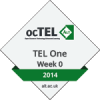

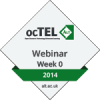
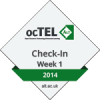
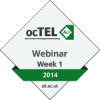 (working on the Explore one for Week 1!)
(working on the Explore one for Week 1!)
It’s been a busy week and I am still wading through posts to collect those gems of information and experiences.
New experiences – So far I have tried WordPress (obviously – duh), Scoop.it, Twitter (but my phone isn’t allowing me to log in only by PC – kind of defeats the object somehow!), Google + – again failed to find a forum here – is there one? I’ll pass on Minecraft in case I get as addicted as my 14 year old son and there’s no cure yet. There’s still time for experimentation.
Big and Little Questions
Posted by Louise Woodland in Current Issues, TEL on April 29, 2014
Please reflect on your work experience and ambitions for developing your teaching.
- Can you identify the most important question about TEL that matters to you?
How can I engage academic staff with using TEL for the right reasons and in the best way
- Write down your reflections on this and share online …
I am sure that if the academic staff would pro-actively take ownership of their courses online and use it for more than an information dump then students would be encouraged to interact more with it and get more from it. Obviously using the VLE is by no means the be-all of technology;s offerings and there are other tools out there which can be using seperately or incorporated into the VLE to enhance learning. As students use more mobile devices and smart phones so we are looking into supporting the courses using these this year. However the vision for using them is so limited. One member of staff only wants the students to access PDFs’ from it via the Blackboard App on their mobile device – nothing else.
The struggle we are facing to generally engage staff is huge and daunting as there are only a few of us to do this. I have found forums like this very useful – for one thing I discover that we are not alone and others face the same resitance – or apathy – or is it fear of getting it wrong? I think we will have to take small steps and show by examples and case studies what can be done. I think recommendation by peers could be quite a motivator and once people see that some technological tools can be useful (as long as it is used to make teaching easier/relevant, learning more effective/deeper, and isn’t just introduced because it is new and shiney)they may be more willing to give it a go.
- your previous experiences with TEL and what technology was involved;
The VLE I suppose as a start, but I have used blogs like WordPress and Twitter (on one BYOD course) using mobile phones or tablets only)
- any differences you noticed in the way you absorb, reflect, discuss, act
I work better if I have time to read and think about what I am going to write – I can’t be spontaneous I am afraid! I am getting better though nad the more I do the more willing I am to creep out of my shell and actually post something
- your experiences as a student, a teacher, learning technologist or indeed some other role;
I’ll fill this in later when I have written my epic
- if this is your first experience of TEL, the expectations you have of it.
I have done a TEL course before – hoping to get insight from others in using TEL – perhaps good ideas – what’s going on elsewhere etc…
Week One
Posted by Louise Woodland in TEL on April 29, 2014
This is week one on the course. I am spending the first day or so just looking at the set up and where all collaborative places are so that I can choose which to join. With the best will in the world I cannot join them all so I have chosen the forum in the course, one of the groups and Twitter (when I can get it to open on my phone!). I’ll see how that goes and if I want to join any others.
I am really keen on getting badges – got one so far just because I joined. Good start.
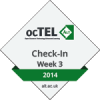
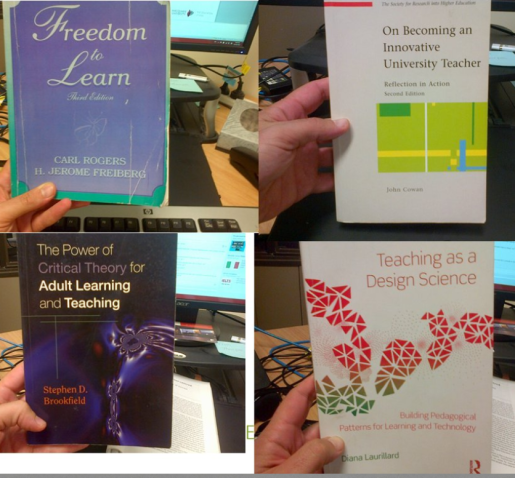
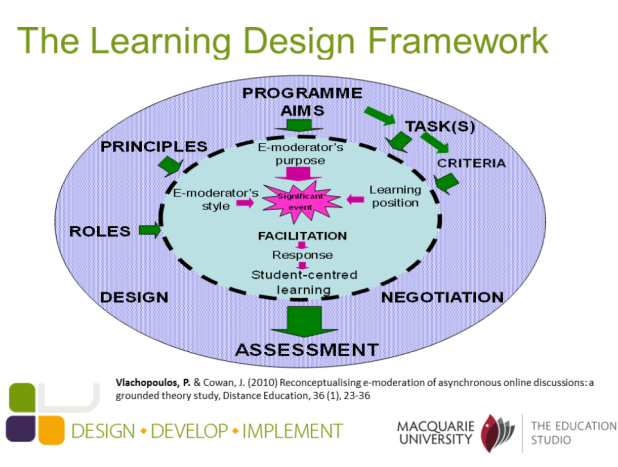
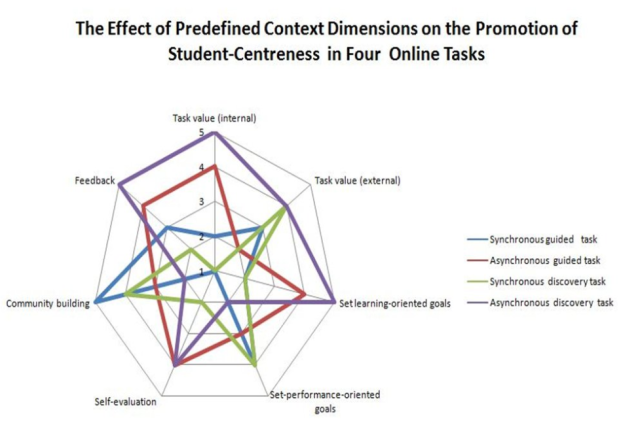
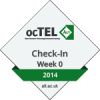
Recent Comments